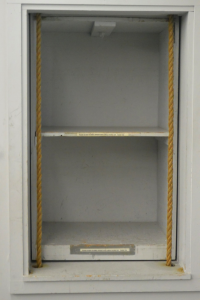Highland history: Thaw Hall and its founders hold surprising past

Highland history: Thaw Hall and its founders hold surprising past
by Jacki Stump
Thaw Hall, named after distinguished donor William Thaw, has a rich history that is full of many unique facts and surprises. It is also connected to a scandalous event involving one of the sons of its benefactor.
Thaw donated the first large contribution of $1000 to buy the land on which Maryville College sits. Thaw began giving even more contributions when the directors of the college enacted a policy to allow black students to attend Maryville College.
According to Ralph Lloyd Waldo’s “Maryville College: A History of 150 Years – 1819-1969,” Thaw said, “the opening of the doors to Negro students was ‘the cornerstone’ of his interest and contributions.”
When Thaw later felt that the president and some professors had become “soft on integration,” he threatened to end his contributions to the college. This prompted the college to draft an amendment to their policy.
The college renewed and reaffirmed their commitment to allow black students to attend Maryville College and to provide equal treatment for all students. As a result, Thaw resumed his contributions. The total contributions of William and Mary Thaw eventually totaled $250,000.
Interestingly enough, one of the sons of William and Mary Thaw, Harry K. Thaw, was involved in a scandalous incident that plagued the family for years. Harry had married a young actress and performer named Evelyn Nesbit. Nesbit had been drugged and brutally raped by architect Stanford White when she was younger. Thaw was incensed by the thought of what his bride had gone through and, while attending a play at Madison Square Garden, he shot White three times.
Thaw would face two trials and eventually be found innocent by reason of insanity. He was institutionalized in the New York State Asylum for the Criminally Insane for seven years, escaped for a time, and then placed back in the asylum for another seven years. His story was portrayed in the movie “Ragtime.” Nesbit would go on to serve as a technical producer for movie called “The Girl in the Velvet Swing.” The movie was a fictionalized account of Nesbit’s encounters with White and Thaw.
The construction of Thaw Hall in 1922 was made possible by a contribution of $50,000 donated by Mary Thaw at the time of William’s death. Mary intended the building to house a new dining hall. The original blueprints show the first floor was to house the dining room with kitchens in the back of the building. One feature of the old kitchen remains in Thaw Hall—a still functioning dumbwaiter, which is located in the group study room.
It was decided that there were not enough funds to renovate the first floor of Pearsons Hall to house classrooms, so the dining room remained in Pearsons Hall.
The Lamar Memorial Library, which had outgrown its home in the building that is now the CCM, was instead moved to Thaw Hall in 1925. The college infirmary also occupied space on the first floor. The second floor housed the Preparatory and Manual Training departments. The area designated for the library was larger than the library needed so some of the area was used for faculty offices, and housed the Highland Echo and the Chilhowean offices for a time.
Classrooms and faculty offices replaced the Preparatory and Manual Training departments after they were phased out. In 1986, Thaw Hall was renovated and remains much the same way today.
